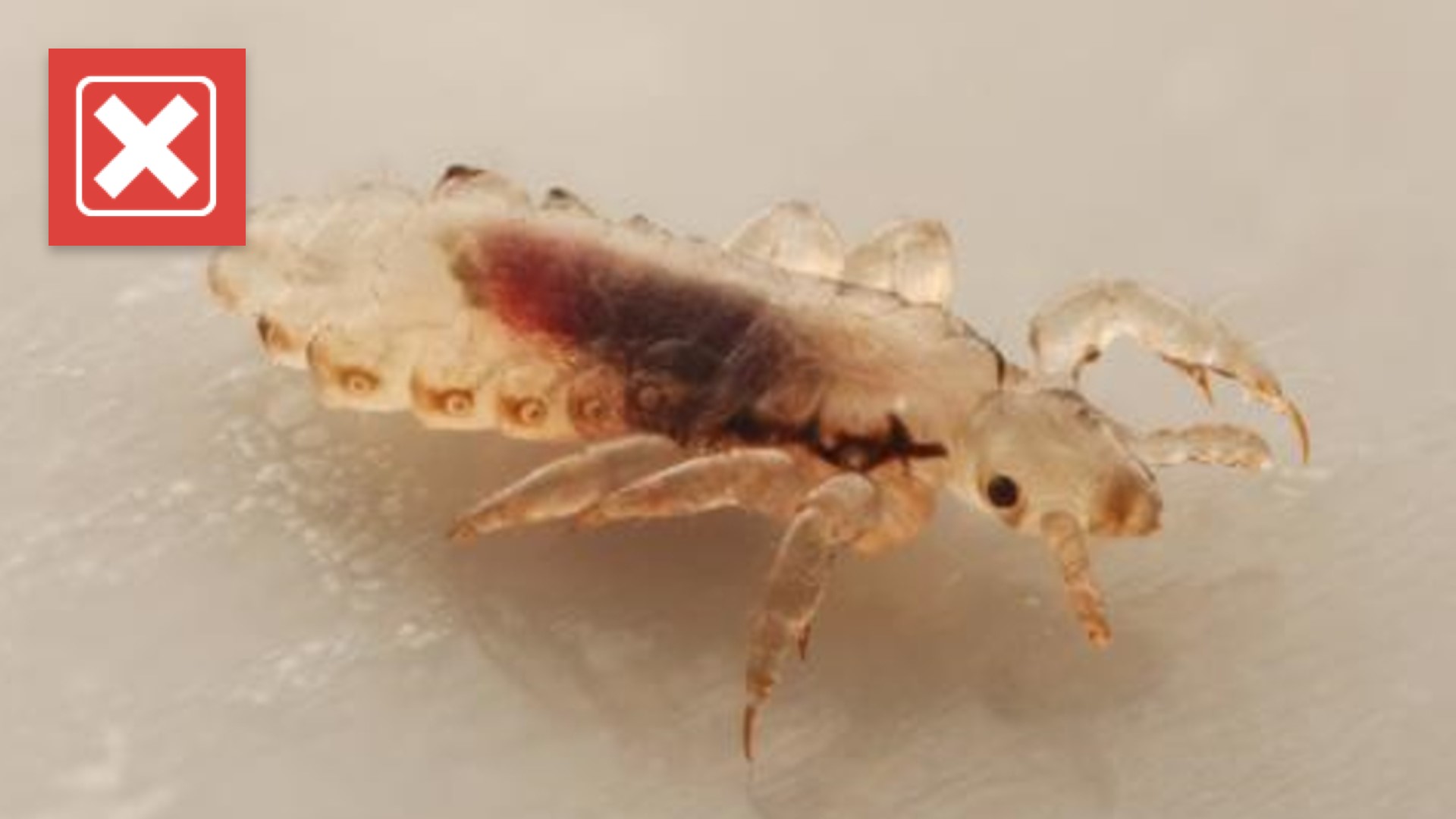MISSOURI, USA — The school year is going six weeks strong, but as teachers share knowledge with their students, some classrooms may see kids sharing something else: head lice.
There are around six to 12 million head lice infestations that happen every year in the United States, the vast majority happening in kids between the ages of three and 11, according to the Centers for Disease Control and Prevention (CDC). The parasites spread commonly through person-to-person contact and lay eggs at the base of hair follicles.
Jessica from Chesterfield, a 5 On Your Side viewer, asked the VERIFY team whether kids had to be sent home from school early when infected with head lice. We dug into the creepy-crawly facts to find out.
The question:
Do kids with head lice have to be sent home from school?
Our sources:
- CDC
- Missouri Department of Elementary and Secondary Education
- Illinois State Board of Education
- Illinois Department of Public Health
- National Association of School Nurses
The answer:
No, students diagnosed with live head lice do not have to be sent home early from school. In fact, multiple health experts even advocated for the discontinuation of school policies that send kids with lice home early.
Current policies vary from school to school, but most recommend checking in with the school nurse.
What we found:
Every source 5 On Your Side contacted on the topic, including the Missouri Department of Elementary and Secondary Education, the Illinois State Board of Education and Department of Public Health, and the National Association of School Nurses, all shared the same recommendation: Children with head lice should not be sent home from school early. Students with head lice should receive treatment at home after school and may return to class after the first treatment has begun.
Head lice may be a nuisance to the people who have it, but there is no research that shows the parasite spreads any disease, the CDC said on its website. The parasites can cause itching and loss of sleep, but they shouldn't be considered a medical or public health hazard.
Lice cannot jump or fly, and can only transfer from person to person by crawling from one host to the next. Lice spread by contact with inanimate objects and personal belongings is possible, but it is very uncommon since lice feet are specifically adapted to hold onto human hair and not for smooth or slippery surfaces.
The National Association of School Nurses has argued that families often over-correct when they find their child has lice, and that “no live lice” policies in schools cause “unnecessary school absences for students and loss of parent workdays and family wages."
The CDC also recommends schools discontinue policies related to sending kids home early with head lice eggs in their hair, called "nits." The so-called "no-nit" policies reportedly cause unnecessary absences among students and financially hurt family members who are forced to take off work, even though research shows that nits are very unlikely to hatch, are not commonly transferred to other people, and nits are often misdiagnosed by nonmedical personnel.
VERIFY
Have a question you want us to VERIFY? Email hbassler@ksdk.com with your claim to let us know.
Craving more VERIFY? See every St. Louis-area claim we've looked into here.

